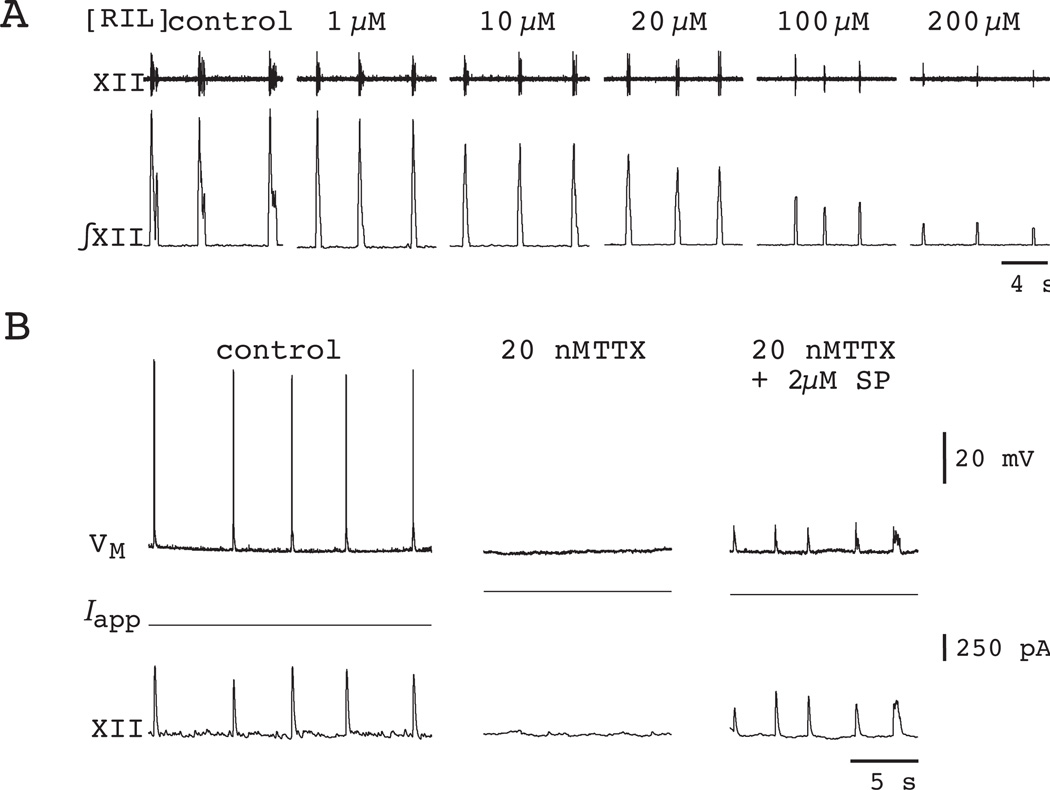Figure 5.
The effects of RIL on respiratory motor rhythm and inspiratory preBötC neurons recorded in vitro. A) Motor activity recorded from the hypoglossal nerve (XII) in a cumulative dose-response experiment. RIL concentration is displayed above each trace. Raw and integrated traces (XII) are shown. B) Substance P (SP) at 2 µM restores respiratory rhythm in a mouse slice exposed to 20 nM TTX. This inspiratory neuron hyperpolarized by 7 mV in TTX, therefore +250 pA was applied (Iapp) to restore baseline VM to −60 mV. After the rhythm stopped, 2 µM SP revived it. The amplitude of the cellular drive potentials and XII amplitude recovered in SP, but spike discharge did not occur with baseline VM at −60 mV. Data have been modified with permission from Del Negro et al. (2002) Neuron, 34, 821–30; and Del Negro et al. (2005) J Neurosci, 25, 446–53.

